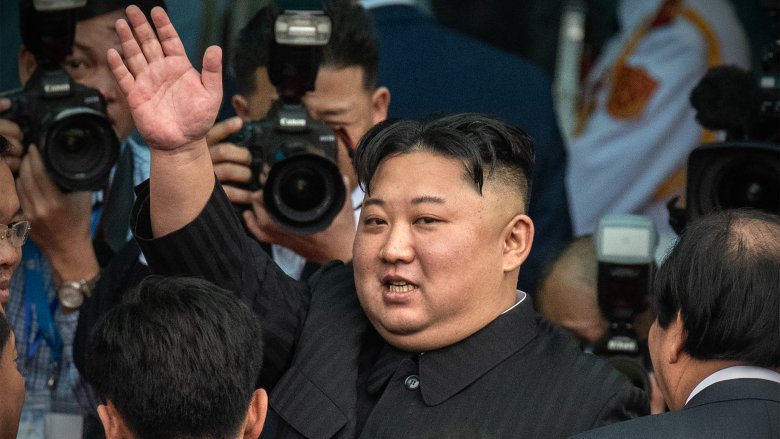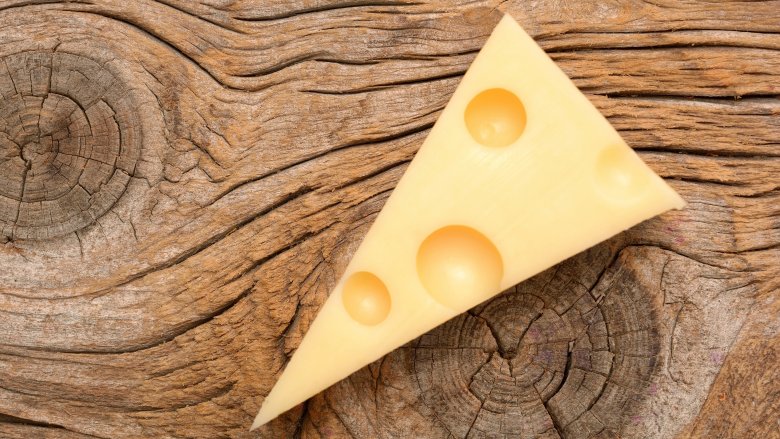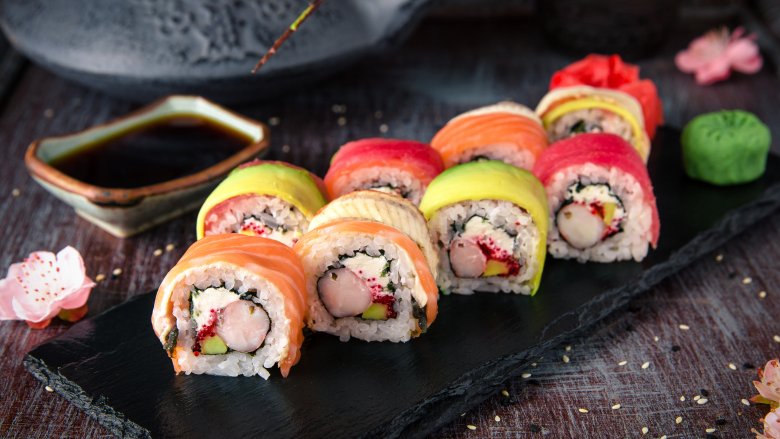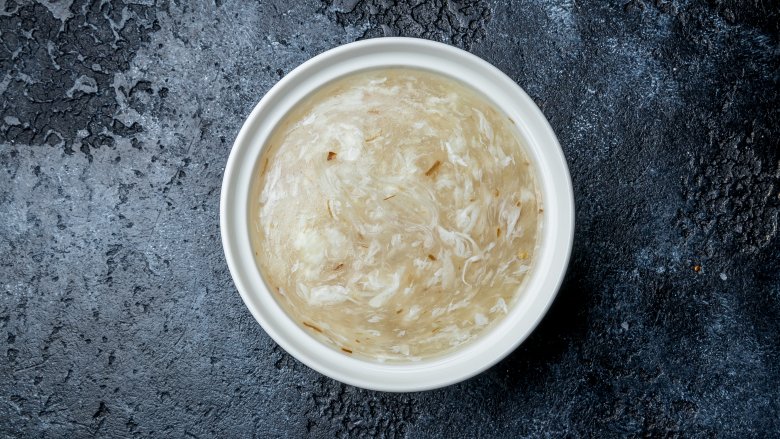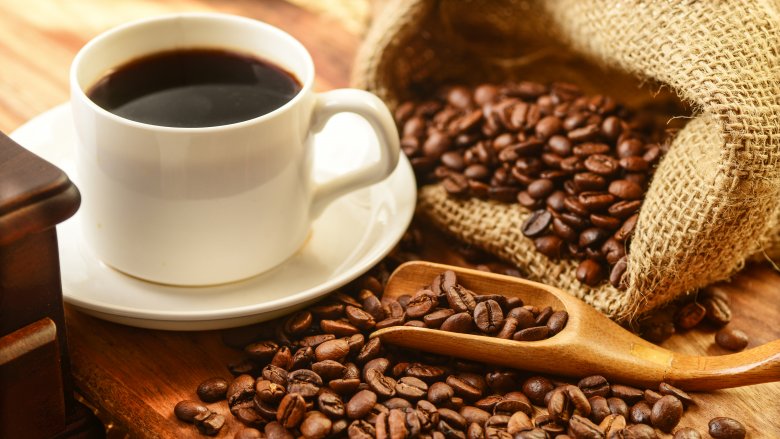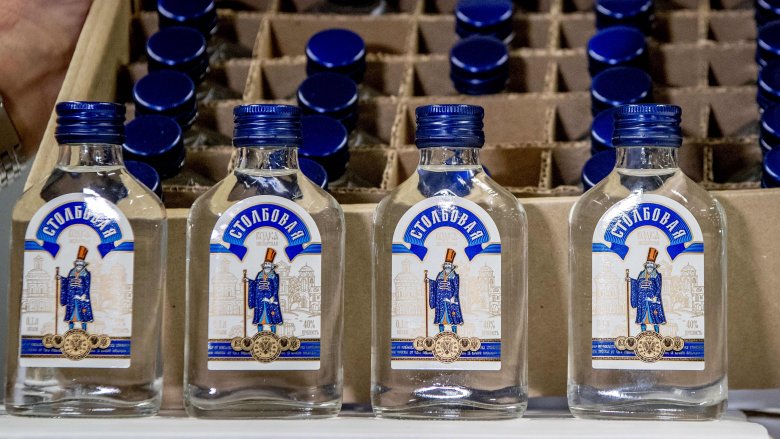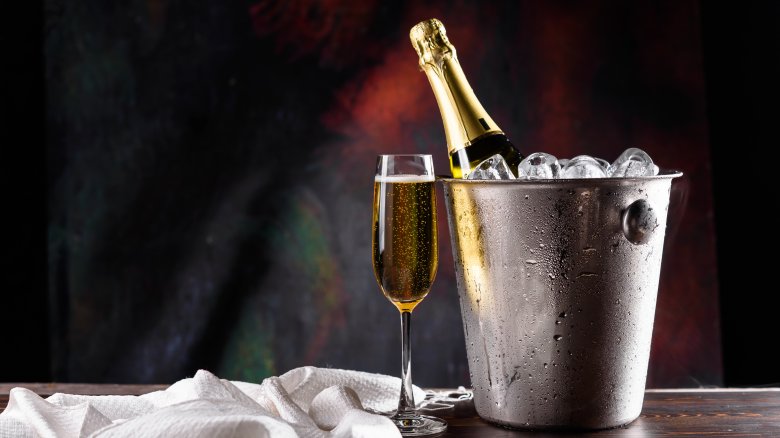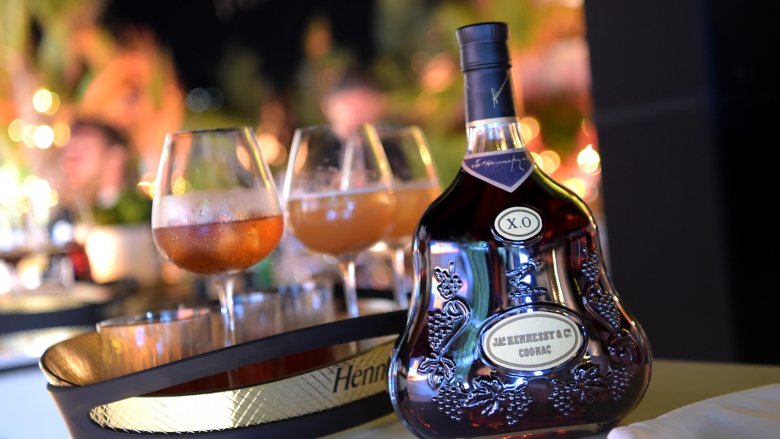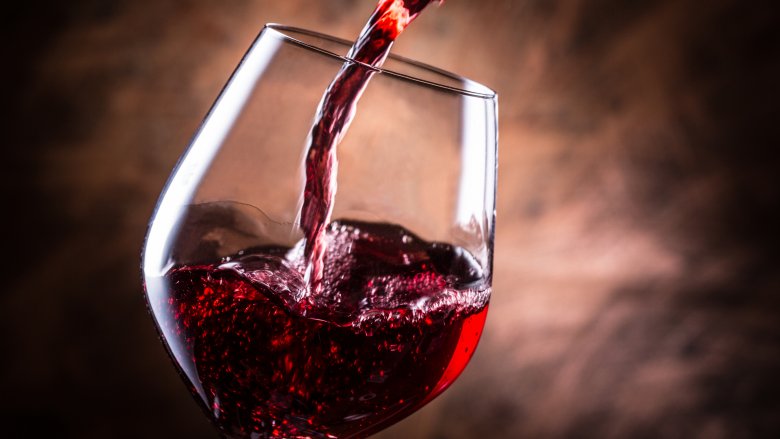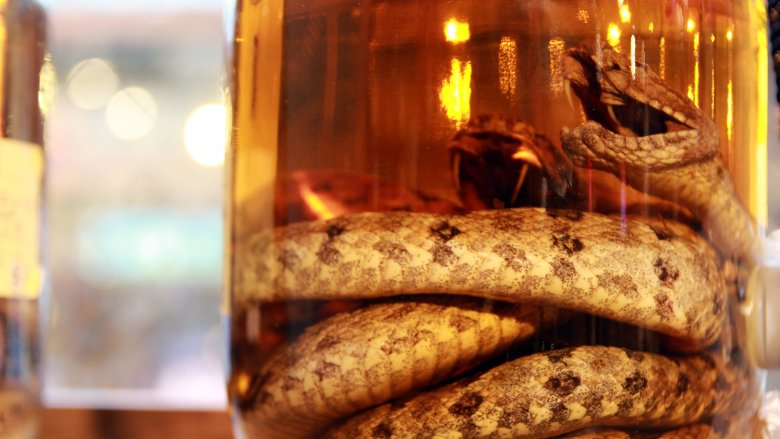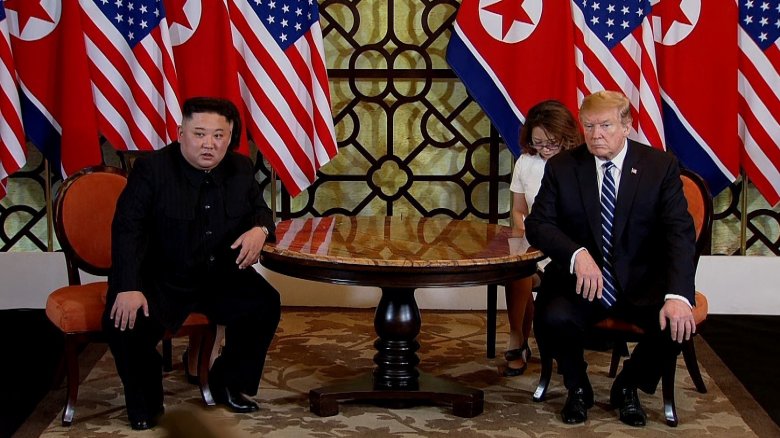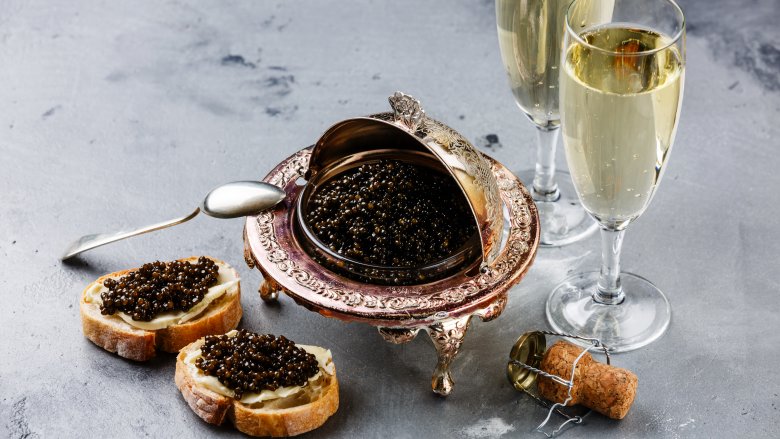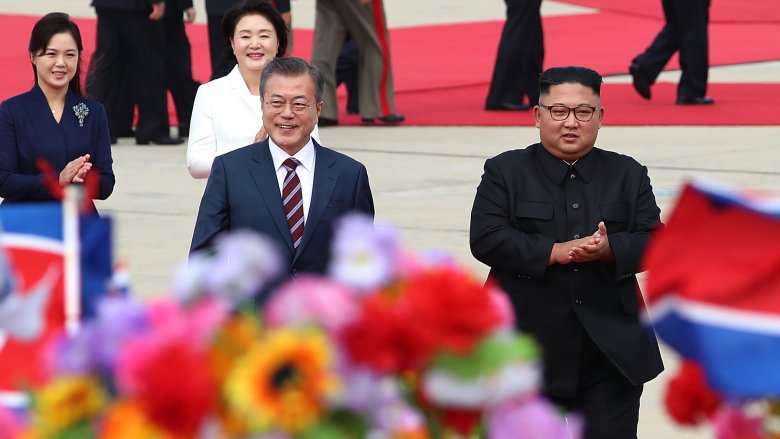This Is What Kim Jong-Un Eats
Even these days, when pretty much every topic is contentious to someone or another, there are a few solid truths which can — hopefully — be counted as uncontroversial. The depravity of Kim Jong-Un is one of these truths.
Considering the hardships to which the people of North Korea are routinely subjected, looking into Kim's eating habits feels a little unproductive. The truth is, however, this man's diet represents one of the most clear-cut demonstrations of his regime's hypocrisy. As of 2019, more than 10 million North Koreans were suffering severe food shortages. Kim's life, however, is a life of sheer luxury filled with imported cheeses, expensive liquors, fine wines, and gourmet dinners — and considering he's practically a king in North Korea, it's probably not surprising that he likes to live like one.
From his obsession with Emmental, to his love of coffee, to his frankly outrageous lust for alcohol, here are the ins and outs of Kim Jong-Un's eating habits.
Emmental cheese
One running theme in Kim's eating habits is that if he likes something, he gorges on it to an almost inhuman degree. Take Emmental cheese, for example. This hole-riddled Swiss cheese is best known for its sweet aroma, fruity flavor, and iconic appearance — as well as the complicated process by which it's made.
Kim likes Emmental cheese, the taste for which he likely picked up during his school days in Switzerland. In fact, he likes it so much that he had to step out of the public eye in 2014 for health reasons, which, according to the South Korean newspaper Yonhap (via Eater) was an affliction of gout, thought to be brought on by his high-calorie diet, lack of exercise, and obsession with cheese.
The DPRK has even been known to send representatives across the world in order to better serve the state's cheese-producing infrastructure. In 2014, Pyongyang officials visited a French dairy college in an attempt to secure more fine cheeses for their country (and their leader). Although the request for training Kim's would-be personal cheesemakers was reportedly turned down, there's a good chance he's still finding a way to get his hands on all the cheese he wants.
Sushi
Sushi has been a crucial part of upper-echelon North Korean life since long before Kim came to power. Kenji Fujimoto was Kim Jong-Il's long-serving personal sushi chef, and says he was Kim Jong-Un's friend and playmate during their childhood and teen years. He recalls the younger Kim having an affinity for sushi made with torro, the fatty part of the tuna, the same cut his father loved, and told Mail Online, "I used to make sushi for the General (Jong-Il) at least once a week and Jong-Un always joined the dinner. So I could say Jong-un liked sushi."
Fujimoto had arrived in the DPRK in 1982 on a one-year contract to teach sushi-making to Pyongyang chefs and soon agreed to stay on for longer, quickly becoming a close confidant to Kim Jong-Il, often securing fine delicacies for the leader. After a few run-ins with Japanese intelligence agencies, Fujimoto eventually fled North Korea for good.
When Kim Jong-Un took the DPRK's reigns in 2012, however, Fujimoto was invited back — which would imply some kind of genuine good will towards his father's former sushi chef on the part of the North Korean leader. Either that, or he really liked his sushi. In a 2013 interview with GQ, he announced his intentions to return to North Korea for good, and in 2017 he opened a sushi restaurant in Pyongyang. Although it's not certain whether or not Kim is a regular at Fujimoto's restaurant, it seems likely; if not simply because they seem to be good friends.
Shark fin soup and Kobe steak
In 2015, shortly before returning to North Korea for good, Kenji Fujimoto spoke to the Daily Mail about his future leader's eating habits. Recalling his 2012 visit to the country, Fujimoto explained that he had taken part in a boozy, extravagant banquet, at which Kim Jong-Un was present, which gave some insight into the kinds of delicacies Kim prefers. Among other things, shark fin soup was on the menu.
"I was so drunk when I visited North Korea in 2012," he explained, "and when I woke up, I was in my bed, so I don't remember what was on the table well. I poked a dish of shark fin a couple of times to gesture I was enjoying it, but I was very tense and could not eat much."
Shark fin soup is an east Asian delicacy (enjoyed particularly in Vietnam and China) and one of the most controversial dishes in the world, largely because its popularity has pushed some species of shark to the edge of extinction.
The chef revealed he had also eaten Kobe steak during the banquet, one of the priciest types of beef on the planet. To qualify as Kobe, the beef must meet a strenuous list of different criteria, based on location, quality of meat, and weight restrictions. It tends to cost around $150 per pound.
Brazilian coffee
It's not just high-quality food that Kim enjoys gorging on. Import data released in 2017 revealed that, in 2016, North Korea had imported £715,000 (just over $900,000) worth of Brazilian coffee into the country for its leader and his entourage — a figure almost 12 times greater than that reported in 2015.
Brazil is generally regarded as being home to some of the finest coffee in the world. Today, the country is the single largest exporter of coffee, with most of its stock shipping to Germany, the United States, Italy, Japan, and Belgium. Brazil's rich soil and hot climate make it an ideal environment in which to grow coffee, with some of the country's finest coffees coming from its southern regions.
It's not known exactly which brand of coffee Kim likes to import, but some of Brazil's more expensive coffees (such as Fazenda Santa Ines) tend to run up to $50 per pound. Other brands can cost as much as $500 per pound. Whatever Kim's drinking, one thing is clear: He's drinking a lot of it.
Russian vodka
Kim Jong-Un is no stranger to a drink or two. In fact, he regularly imports more alcohol for his own personal use than most people will ever drink in their lives. In 2019, for example, the Dutch port of Rotterdam seized 90,000 bottles of Russian vodka, which officials believed were headed for Pyongyang.
A ship belonging to a Chinese company called Cosco Shipping was halted in Rotterdam on a tip from the Russian foreign ministry, and customs agents quickly discovered some 3,000 cases of vodka inside. The United Nations have previously banned the export of luxury goods to the DPRK, but over the previous two years, the country had attempted to dodge international sanctions. Previously, officials have seized champagnes, cheeses (obviously), and televisions. This time, the vodka was hidden under an aircraft fuselage.
Allegedly, the vodka was supposed to be enjoyed by Kim and his military commanders. And although this shipment didn't quite make it to Pyongyang, it's likely that many more reach the shores of North Korea on a regular basis.
Cristal
More drinks, here — because what is a tyrannical dictator without his Champagne? Not just the bubbly of choice for French connoisseurs, movie stars, and yacht enthusiasts, Champagne is also a favorite amongst planet Earth's worst despots. Kim Jong-Un, of course, is no exception.
During his sit-down with the Daily Mail, Kenji Fujimoto revealed that Kim's love of fancy booze has probably contributed to his ever-expanding waistline. "He drank a lot," Fujimoto told the website. "His favorite was Cristal, usually about two bottles [in a sitting]."
Produced by the Louis Roederer estate, Cristal was created in 1876 at the behest of Tsar Alexander II of Russia. Described by Roederer as "a remarkably balanced and refined champagne whose length is inimitable," Cristal is known for its "silky texture" and "fruity aromas." Perhaps more importantly, however, it is also ludicrously expensive: Bottles regularly sell for well over $100, with some larger formats going for upwards of $11,000. Considering the name "Cristal" is practically synonymous with a lavish, extravagant lifestyle, it comes as particularly unsurprising that Kim enjoys it so much.
For what it's worth, by consuming two bottles of the stuff in a single sitting, Kim would have been adding over 1,100 calories to his daily intake. If he does that on even a semi-regular basis, those health problems of his might start to make sense.
Hennessy
Yes, even more booze. Under Kim Jong-Il, North Korea allegedly spent around $1 million every year on Hennessy, a brand of French cognac which costs about $630 per bottle in the DPRK — more than most North Koreans make in a year. Kim the elder had often been spotted drinking Hennessy at meetings and summits with world leaders, and it seems the apple doesn't fall far from the tree: Kim Jong-Un was said to be drunk when he ordered the execution of two of his uncle's political aides in 2013. It's not certain what he'd been drinking, but it's not hard to imagine there's a still a little of his father's stash left lying around.
Hennessy is one of the world's finest and largest cognac producers. Established in 1765, the estate's product has been enjoyed by such historical figures as George IV and Tsar Alexander I, and has been drunk all across the world — from France to China to the Arctic Circle and, of course, North Korea. Exactly how much Hennessy Kim consumes on a daily basis is unclear, but the amount the country spends on importing it would imply they bring in thousands of bottles every year. Even accounting for his military attache, his entourage, and his personal friends, that's a lot of cognac.
Bordeaux wines
After taking such strenuous efforts to prove his taste for luxury with Russian vodka, Cristal champagne, and Hennessy cognac, it seems only natural that Kim would round it all off with the world's finest wines. According to Kenji Fujimoto, Kim has a particular penchant for French wine and once boasted about drinking 10 bottles of Bordeaux in a single night. Although this claim came from a man who also insists he started driving at the age of three, we're going to look into it anyway.
Considering "Bordeaux" could mean hundreds (even thousands, maybe) of different wines, it's hard to gauge how much money this would cost. A bottle of Bordeaux could easily sell for no more than a few dollars. Equally, however, it could also fetch thousands of dollars; it just depends on which wine estate produced it, and when. Bearing in mind who we're talking about here, however, it seems likely that the plonk Kim opted for wasn't cheap stuff.
As for the 10 bottle claim? A bottle of red wine tends to contain around five glasses, meaning, on that fateful night, Kim would have drunk around 50 standard-sized drinks. And drinking only five glasses every week can knock years off your life. The exact health effects on a human who manages to drink 50 glasses of wine in one sitting aren't particularly well-known, however, largely because it'd be nigh-on impossible without passing out.
Not that we're calling Kim a liar, or anything.
Snake wine
Kim does include one more type of wine in his cellar, albeit one with a far more specific purpose than the others. According to a 2014 report by UK tabloid Metro, Kim regularly drinks snake wine — a popular drink that comes with the body of a dead cobra in the bottle, which is thought by some to increase the virility of the drinker. Kim's reliance on snake wine is said to have come from his desire (and failure) to father a second child with his wife.
"The elite in the country," said a South Korean expat, "joke that he is too big to please his wife and that's why they do not have any other children. One senior official said that Kim was drinking many bottles of snake wine to help him in the bedroom department."
Snake wine is popular all across South China and Southeast Asia. Its makers usually put one large snake inside each bottle, and throw in a number of different roots, berries, and herbs for flavor or medicinal effect. The flavor is said to be earthy, and similar to "rice wine with a protein finish, like a fishy chicken." Occasionally, the snake is drowned in the alcohol during the winemaking process — leading to the occasional incident in which half-living snakes have leapt out of the bottle and attacked the drinker.
Summit dinners
Being a state leader, Kim often finds himself attending lavish dinners, banquets, and other occasions which hold considerable heft on the international stage. Unsurprisingly, the menus at such events tend to be chock-full of haute cuisine and gourmet dishes. Take Kim's Hanoi summit with Donald Trump in February 2019, for example. The menu was originally set to include Hanoi-style spring rolls, grilled cod fish "cha ca," and shredded mango salad with scallops — nothing you'd turn your nose up at.
On that particular occasion, the menu actually became subjected to something of a rewrite. In the end, Kim was served shrimp cocktail with Thousand Island dressing, grilled sirloin with pear kimchi, and chocolate lava with fresh berries and vanilla ice cream for dessert. The exact reason for the change in menu wasn't given, but it's likely no coincidence that those foods are the exact type of thing you tend to find on the menu at Trump's own hotels and restaurants. Was it a power play or pickiness on Trump's part? That's not certain either, but it's not like Kim was going to go hungry either way.
Caviar and lobster
In 2019, the executive chef at Hanoi's Metropole Hotel — where the Trump/Kim summit was held — revealed some new details as to the North Korean leader's eating habits. Chef Paul Smart told China News Weekly that, in the lead-up to the summit, the North Koreans brought their own ingredients into his kitchen, including Wagyu beef, kimchi, foie gras, ginseng, and persimmon punch.
Smart described the North Korean staff who worked alongside his team as "mysterious but very professional," and noticed that they tasted dishes an hour before serving to check the food was safe. Another detail that Smart picked up on was Kim's preference for a medium-rare to very rare steak (Trump, famously, prefers his meat well-done). The North Koreans also alleged that Kim has a preference for caviar and lobster — two foods which, as luxury items, are on that long list of imports that are banned from entering North Korea by the United Nations.
Extravagant feasts
Kim attended another dinner in 2018, this time with Republic of Korea president Moon Jae-in — set amongst the backdrop of the Korean demilitarized zone. In the Peace House that stands in the DMZ's so-called "truce village" of Panmunjom, Kim and Moon dined on a number of extravagant, expertly-made dishes. These included chilled octopus garnished with citrus soy sauce, parcels of sea cucumber, cod, and beef, sea bream and steamed crab, rosti (a Swiss dish of fried grated potatoes), grilled John Dory fish, beef and vegetables, noodles, mango mousse inside a chocolate dome, and tea with mushrooms.
The dinner was also rife with symbolism, with ingredients sourced from locations with personal value to the two leaders, surprise miniature maps of a unified Korea, and frequent acknowledgements of both countries' culinary traditions.
Although tensions between the DPRK and the ROK tend to run high — and the prospect of war never seems to slip out of mind — the citizens of each country should at least be able to find some solace in knowing that their leaders are eating like kings.
